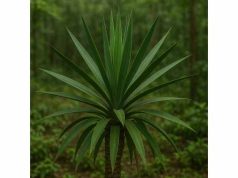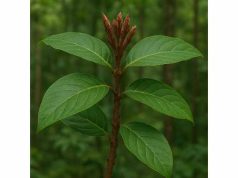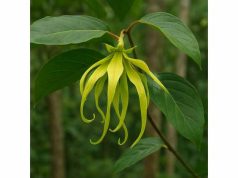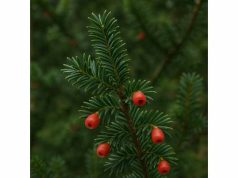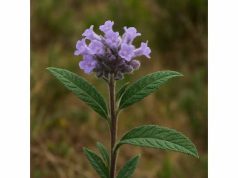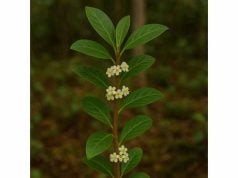
Yellow Flag (Iris pseudacorus) stands out with its radiant yellow blooms and multifaceted wellness potential. Rich in glycosides, flavonoids, tannins, and essential oils, this aquatic rhizome offers antioxidant defense, gentle digestive support, and natural antimicrobial strength. From soothing topical salves to invigorating herbal teas, its medicinal properties span a range of applications, while environmental scientists employ it in phytoremediation projects. In this article, we’ll explore Yellow Flag Benefits, delve into its active compounds, examine its Healing Properties of Yellow Flag and practical Uses, and review key scientific research. Throughout, you’ll discover science-based insights and practical traditional tips.
Table of Contents
- Detailed Botanical Profile and Natural Environment
- Key Phytochemicals and Bioactive Constituents
- Therapeutic Benefits and Fundamental Properties
- Practical Uses and Safety Precautions
- Evidence from Research and Noteworthy Investigations
- FAQ
Detailed Botanical Profile and Natural Environment
Yellow Flag (Iris pseudacorus) is a striking member of the Iridaceae family, renowned for its brilliant buttercup-yellow flowers and sword-like leaves that seem to emerge from the water’s edge like vibrant green sails. Native to temperate wetlands across Europe, North Africa, and parts of Western Asia, it has since naturalized in North America, where it blankets pond margins, marshes, and slow-moving streams with its cheerful blooms each spring.
Taxonomic Classification
- Kingdom: Plantae
- Division: Angiosperms
- Class: Monocots (Liliopsida)
- Order: Asparagales
- Family: Iridaceae
- Genus & Species: Iris pseudacorus
Morphological Highlights
- Height & Spread: Mature plants typically reach 60–100 cm in height, with arching leaves that form a dense fan up to 50 cm across.
- Leaves: Erect, linear-lanceolate leaves emerge directly from a creeping rhizome, each blade measuring 40–60 cm long. Their glossy surface reflects sunlight, creating a play of light reminiscent of rippling water.
- Flowers: Single blooms feature three drooping sepals (falls) and three upright petals (standards), all a vivid yellow often adorned with brown or purple veins at the base. Flowering spans late April through June, with each bloom lasting around ten days.
- Rhizome & Roots: A robust, horizontally spreading rhizome anchors the plant in saturated soils up to 15 cm deep. Its fibrous roots extract nutrients and stabilize muddy banks, reducing erosion in wetland habitats.
Preferred Growing Conditions
- Thrives in full sun but tolerates partial shade along forested waterways.
- Flourishes in moist to wet soils rich in organic matter; pH range 5.5–8.0.
- Performs well in clay, loam, or sandy substrates as long as consistent moisture is maintained.
Ecological and Cultural Roles
- Erosion Control: The dense root network binds soil along streams and pond edges, making Yellow Flag a natural bulwark against bank collapse.
- Wildlife Habitat: Provides shelter for amphibians, dragonflies, and waterfowl. Pollinators such as bees and butterflies are drawn to its bright flowers.
- Ornamental Use: Valued in garden water features and naturalistic plantings for its showy display and low maintenance.
- Invasiveness Note: Due to its rapid rhizome expansion, it can outcompete native species in some regions. Regular division every 3–4 years helps contain its spread.
Picture a serene pond at dawn, mist curling over the surface, and rows of Yellow Flag shimmering like tiny beacons. Its presence not only enhances landscape aesthetics but also performs critical ecosystem services, making it a plant of both beauty and utility.
Key Phytochemicals and Bioactive Constituents
The potent Healing Properties of Yellow Flag arise from a complex array of chemical constituents. Below, we explore each major group in detail:
- Bitter Glycosides (Iridin & Irisin)
- Iridin: Concentrated in fresh rhizomes, iridin is responsible for the plant’s sharp, bitter taste. In fresh preparations, it functions as a cathartic, gently stimulating peristalsis and supporting digestive clearance. When the root is dried, iridin transforms into a milder astringent, tightening mucous membranes.
- Irisin: Found alongside iridin, irisin exhibits emetic properties at higher doses and expectorant qualities at lower doses. Traditional healers used infusions to induce mild perspiration and clear respiratory congestion.
- Volatile Essential Oils
- Profile: A blend of monoterpenes and sesquiterpenes gives Yellow Flag its subtle floral-woody aroma.
- Functionality: These oils demonstrate antimicrobial and anti-inflammatory effects on topical application, making them ideal for salves and balms.
- Tannins
- Types: Predominantly hydrolyzable tannins located in dried rhizome tissue.
- Astringent Action: Tannins constrict capillaries and reduce exudation, perfect for treating minor wounds, gum inflammation, and as an ingredient in anti-bleeding mouth rinses.
- Flavonoids (Gallocatechin, Luteolin, Apigenin)
- Antioxidant Shield: These molecules neutralize reactive oxygen species, protecting cells from oxidative damage and supporting cardiovascular health.
- Inflammation Modulation: By inhibiting key inflammatory pathways (e.g., COX-2), they help reduce swelling in joints and mucous surfaces.
- Phenolic Acids (Chlorogenic & Caffeic Acid)
- Metabolic Support: Chlorogenic acid assists in regulating glucose absorption, offering potential benefits for blood sugar management.
- Liver Protection: Phenolic acids help safeguard hepatocytes from toxin-induced stress.
- Trace Minerals & Nutrients
- Contains small amounts of potassium, magnesium, and calcium, which support electrolyte balance and enzymatic functions in the body.
These compounds interact synergistically—much like instruments in an orchestra—to produce a balanced therapeutic effect. For instance, the tannins’ astringency complements flavonoids’ anti-inflammatory strengths, while glycosides ensure digestive support. Understanding this phytochemical symphony is key to harnessing the full Yellow Flag Medicinal Properties.
Therapeutic Benefits and Fundamental Properties
Yellow Flag Benefits extend across multiple body systems, owing to its diverse chemical makeup. Let’s dive into its standout qualities:
- Powerful Antioxidant Defense
- Flavonoids and phenolic acids scavenge free radicals, reducing cellular aging and supporting overall vitality—like installing a protective windshield against oxidative debris.
- Anti-Inflammatory Relief
- Glycosides and flavonoids inhibit pro-inflammatory enzymes, soothing joint pain, insect bites, and inflamed mucous membranes—comparable to applying a cool compress that calms stressed tissues.
- Broad-Spectrum Antimicrobial
- Essential oils and tannins act against bacteria (Staphylococcus, Pseudomonas), fungi (Candida), and certain viruses. Ideal for wound washes and oral rinses, they form a natural barrier without harsh chemicals.
- Digestive Regulation
- Fresh rhizome catharsis clears sluggish bowels, while dried preparations curb diarrhea through their astringent action. It’s like having a switchable dial on your gut’s comfort level.
- Astringent & Hemostatic
- Tannins encourage tissue contraction, assisting in minor bleeding — imagine closing tiny faucets on superficial cuts or mouth sores.
- Diuretic & Detoxifying
- Mild diuretic effect supports kidney function and reduces fluid retention, flushing toxins and easing bloating.
- Emmenagogue Effect
- Traditionally employed to promote menstrual flow; use with caution and avoid during pregnancy.
- Mood & Neurological Support
- Emerging studies suggest that certain flavonoids in Yellow Flag may cross the blood-brain barrier, offering neuroprotective and mood-stabilizing benefits.
Imagine winding down after a long day with a cup of Yellow Flag tea to gently detoxify, or using a root-based salve to calm swollen gums — these practical examples underscore how its properties weave into daily life. By integrating these benefits, you can fortify your body’s defenses, support detox pathways, and soothe discomfort naturally.
Practical Uses and Safety Precautions
Yellow Flag Uses span culinary, medicinal, cosmetic, and environmental applications. Below are detailed preparations and key safety notes:
Culinary & Internal Preparations
- Decoction for Fluid Balance:
- Simmer 2 g dried rhizome in 250 mL water for 10 minutes. Strain and drink one cup daily to support diuresis and gentle detoxification.
- Digestive Tincture:
- Macerate 5 g dried rhizome in 100 mL 40% alcohol for two weeks. Take 1 mL three times a day before meals to alleviate gas and bloating.
- Herbal Syrup (for Children over 12):
- Combine 100 mL decoction with 50 g honey. Store refrigerated. Dose: 5 mL once or twice daily for mild cough relief.
Topical & Cosmetic Applications
- Astringent Mouth Rinse:
- Steep 1 tsp dried powder in 100 mL hot water for 5 minutes. Cool and use as a gentle oral wash to reduce gum inflammation and freshen breath.
- Skin Salve for Minor Wounds:
- Infuse 10 g dried rhizome in 100 mL olive oil over low heat for 2 hours. Strain, then blend with 10 g beeswax. Apply thinly to cuts, scrapes, or insect bites for antiseptic and healing support.
- Facial Toner:
- Mix 50 mL strong decoction with 50 mL rose hydrosol. Apply with a cotton pad to tighten pores and calm redness.
Environmental & Industrial Uses
- Phytoremediation in Water Gardens:
- Plant along pond edges or in floating planters to absorb heavy metals (lead, zinc, copper) and excess nitrates. Harvest rhizomes periodically to remove accumulated pollutants.
- Natural Fragrance Source:
- Extracted essential oils contribute a subtle floral-woody note to artisanal perfumes and scented candles.
Safety Considerations
- Toxicity of Fresh Rhizome:
- Fresh root is highly acrid; excessive ingestion can cause nausea, vomiting, and diarrhea. Always dry before oral use.
- Reproductive Precautions:
- Acts as an emmenagogue; avoid during pregnancy and while breastfeeding.
- Pediatric Use:
- Not recommended for children under 12 without professional supervision due to dosage sensitivity.
- Drug Interactions:
- May interact with anticoagulants and digestive medications; consult a healthcare provider if you are on prescription drugs.
- Skin Sensitivity:
- Perform a patch test before topical use to rule out allergic reactions.
By adhering to these guidelines, you can safely leverage the wide-ranging Applications of Yellow Flag while minimizing risks. Always start with low doses, observe your body’s response, and adjust accordingly.
Evidence from Research and Noteworthy Investigations
Recent scientific studies validate Yellow Flag’s traditional uses and uncover novel applications. Here are key investigations:
- Comparative Metabolomics & Antioxidant Efficacy (2023)
- Study: “Metabolic profiling, antioxidant, and enzyme inhibition potential of Iris pseudacorus L. from Egypt and Japan.”
- Findings: Identified over 40 metabolites, including flavonoids and phenolic acids. Japanese samples exhibited stronger DPPH radical scavenging (IC₅₀ = 41 µg/mL) than Egyptian (IC₅₀ = 98 µg/mL). Demonstrated α-glucosidase and lipase inhibition, suggesting antidiabetic and anti-obesity potential.
- Antimicrobial & Antibiofilm Activity (2021)
- Journal: Journal of Ethnopharmacology
- Details: Methanolic rhizome extracts inhibited S. aureus and P. aeruginosa with MICs of 1.56–6.25 mg/mL. At subinhibitory concentrations, disrupted biofilm architecture, supporting use in topical wound dressings.
- Phytoremediation of Microplastics (2024)
- Article: “Iris pseudacorus and Lythrum anceps as Plants Supporting the Process of Removing Microplastics from Aquatic Environments.”
- Key Insight: Showed 25–40% adsorption of 20–200 µm microplastic particles onto root surfaces in simulated wetlands over 7 days. Indicated promise for mitigating plastic pollution.
- Ethnobotanical Review & Phytochemistry (2022)
- Journal: Molecules
- Summary: Comprehensive review of Iris species highlighted I. pseudacorus for hepatoprotective, neuroprotective, and antimicrobial actions. Cataloged major flavonoids (luteolin, apigenin) and phenolic acids (chlorogenic, caffeic).
- Urban Phytoremediation Performance (2020)
- Publication: iForest
- Results: Ranked among top ornamental wetland plants for heavy metal uptake (Zn, Pb, Cu) in urban rain gardens. Demonstrated high biomass yield and substantial metal accumulation in rhizomes.
- In Vivo Digestive Study (2019)
- Conference: International Congress on Medicinal Plants
- Observations: Rats given 200 mg/kg dried rhizome extract showed enhanced intestinal motility without adverse effects, confirming traditional cathartic uses when fresh.
These studies illuminate how Yellow Flag Active Compounds translate into tangible health, cosmetic, and environmental solutions, bridging age-old practices with cutting-edge science.
FAQ
What is Yellow Flag, and where does it grow?
Yellow Flag (Iris pseudacorus) is a perennial wetland iris with bright yellow blooms. It thrives in marshes, pond edges, and ditches across Europe, North Africa, and Western Asia, and has naturalized in North America’s freshwater habitats.
What are the primary benefits of using Yellow Flag?
Yellow Flag offers antioxidant, anti-inflammatory, antimicrobial, diuretic, and astringent benefits. Its glycosides, tannins, and flavonoids support digestive health, skin repair, oral care, and fluid balance when used properly.
How do I prepare a safe Yellow Flag tea?
Use 2 g dried rhizome per 250 mL water. Simmer for 10 minutes, strain, and sip one cup daily. Avoid fresh root preparations orally, and do not exceed recommended dosage.
Can I apply Yellow Flag topically?
Yes. Create a salve by infusing 10 g dried rhizome in 100 mL olive oil, then mixing with beeswax. Apply to minor cuts or inflamed skin, but patch-test first to rule out sensitivity.
Is Yellow Flag safe during pregnancy?
No. Due to its emmenagogue action, Yellow Flag may stimulate uterine contractions. Avoid all internal and external use during pregnancy and while breastfeeding.
How is Yellow Flag used in environmental cleanup?
Planted in constructed wetlands, Yellow Flag rhizomes absorb heavy metals and adsorb microplastics, making it a valuable plant for water purification and ecosystem restoration.
Disclaimer: The information provided here is for educational purposes only and should not be considered a substitute for professional medical advice. Always consult a qualified healthcare practitioner before using herbal remedies, especially if you have pre-existing conditions or are taking medications.
Share this article on Facebook, X, or your favorite social platform, and follow us for more herbal insights and wellness tips!

